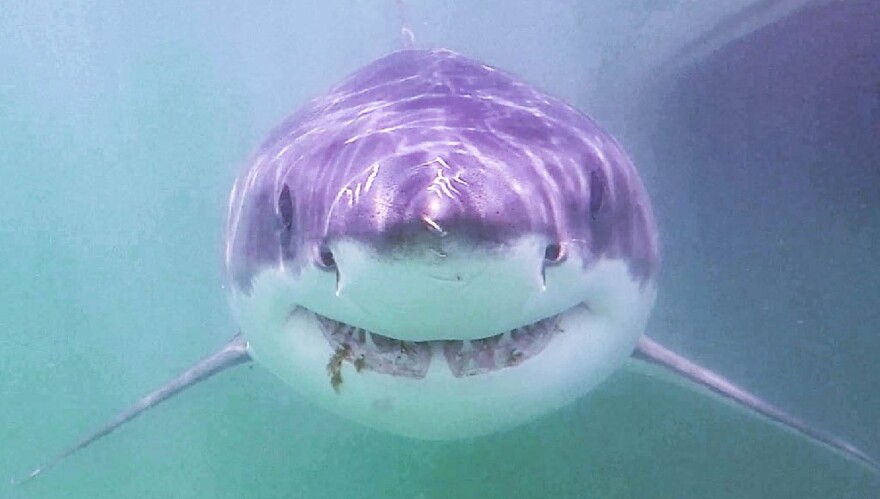The white shark monitoring season has begun off Cape Cod.
Shark scientists from the state and the Atlantic White Shark Conservancy have deployed acoustic receivers along the coast to detect tagged sharks. Their goals are twofold: to develop knowledge of the sharks’ long-term behavior, and to protect beachgoers in real time.
The Cape has many acoustic receivers, but only five of the expensive ones that provide real-time alerts to the Sharktivity app.
This year, they are located at North Beach, Nauset Beach, Lecount Hollow Beach, Newcomb Hollow Beach, and Head of the Meadow Beach.
Another two real-time buoys have been placed off the town of Marshfield, which chose to buy the equipment itself. The ones off the Lower and Outer Cape were purchased with grants and private funding.
State shark scientist Greg Skomal said towns on the Cape wanted to see how well the technology worked before investing in it.
“That's what a lot of the Cape towns are doing,” he said. “You know, they're waiting for us to sort out how well that works. Will the equipment hold up? Does it produce information that's going to be useful for them to better manage their beaches?”
The last time he bought real-time receivers, they cost about $16,000 each, he said.
Skomal said the state’s Shark Working Group, which includes scientists and representatives from local towns, will meet in the coming weeks to discuss what the research has shown so far, he said.
Over the last several years, data from the real-time buoys has improved public understanding of how white sharks use Cape-area waters, said shark scientist Megan Winton of the Atlantic White Shark Conservancy.
“Some of the lifeguards we work with have mentioned that they used to think that white sharks occurred every once in a while, but now they realize that they're essentially a constant presence off their beaches in the summer and the fall, which is really powerful,” she said. “That's a big shift in perception.”
Researchers are also testing the effectiveness of drone cameras for shark detection. But cloudy water can make it difficult for a drone to see sharks clearly.
In addition, the scientists are equipping some of the shark tags with cameras that trail behind the dorsal fin and show the shark’s movement.
Regarding swimmer safety, Skomal said water depth is more important than distance from shore. Seals move to shallow water to avoid sharks, and the sharks follow them, sometimes swimming in as little as four feet of water to prepare to strike.
This story has been updated to include the names of beaches with real-time monitoring.








